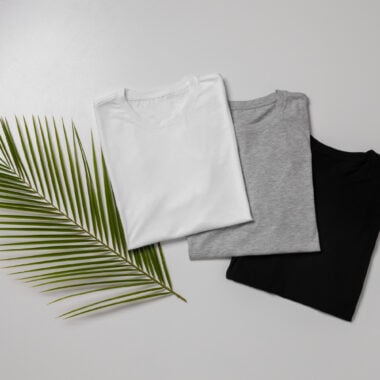Garment quality is a crucial factor to consider when creating custom apparel. Opting for low-quality garments may seem like a cost-effective choice initially, but it can lead to a myriad of issues down the line. From poor print adhesion to uneven coloring, low-quality fabrics can compromise the overall look and longevity of your design. Inexpensive materials are more prone to shrinkage, fading, and pilling, detracting from the desired aesthetic and durability of the final product.
Additionally, low-quality garments may result in discomfort for the wearer, affecting the perceived value of your brand. Scratchy fabrics or ill-fitting cuts can leave a negative impression on customers, impacting their likelihood to wear the garment repeatedly and act as walking advertisements for your business. Investing in higher-quality materials may require a slightly larger budget upfront, but the payoff in terms of customer satisfaction, brand reputation, and long-term wearability can far outweigh the initial cost.
Common Mistake: Not Considering Fabric Type
When it comes to creating custom printed garments, one common mistake that many people make is overlooking the importance of considering the fabric type. Different fabrics react differently to printing techniques, which can greatly affect the quality and longevity of the design. Failing to take into account the fabric type can result in prints that fade quickly, peel off, or look distorted on the material.
Another downside of not considering the fabric type is that certain fabrics may not be compatible with certain printing methods, leading to subpar results. For instance, attempting to print a design meant for cotton onto a polyester blend fabric can lead to colors bleeding or the image not adhering properly. By not carefully choosing the right fabric for your design, you risk compromising the overall appearance and durability of your custom printed garments.
Common Mistake: Incorrectly Preparing Artwork
Incorrectly preparing artwork is a common pitfall that many individuals fall into when creating custom designs for printing. One prevalent mistake is using low-resolution images that result in blurry or pixelated prints. Ensuring that your artwork is of high quality and resolution is essential for achieving a crisp and professional final product.
Another error in artwork preparation is neglecting to convert text to outlines before sending the file for printing. Failing to do so can lead to font compatibility issues, where the printer may not have the same fonts installed on their system, causing your text to appear incorrectly. Converting text to outlines ensures that your text will be displayed exactly as intended, eliminating any room for error in the printing process.
Common Mistake: Ignoring Color Matching
Neglecting to pay attention to color matching is a frequent error that can lead to disappointing outcomes in printing projects. When colors do not match accurately, the final product may not reflect the intended design, creating inconsistencies that can detract from the overall visual impact. This oversight can result in a lackluster appearance and undermine the quality of the printed materials.
To avoid this mistake, it is crucial to ensure that the colors used in the design are accurately translated during the printing process. Failure to consider factors such as color profiles, color spaces, and monitor calibration can lead to variations in the final print that may deviate significantly from the original vision. By prioritizing color matching and taking the necessary steps to address any discrepancies, you can elevate the professional quality of your printed materials and ensure that your designs are realized with precision.
Common Mistake: Improper Placement of Design
Many individuals often overlook the importance of properly placing a design on a garment. Placing the design too high or too low on a shirt can result in an awkward and unflattering look. It is crucial to consider the size and shape of the garment when deciding on the placement of the design to ensure it complements the overall appearance.
Improperly placed designs can also affect the functionality of the garment. For instance, placing a large design directly under the armpit can cause discomfort and restrict movement. Taking the time to carefully plan and visualize the placement of the design on the garment can enhance the wearability and aesthetics of the final product.
Common Mistake: Neglecting to Test Print
Failing to test print before mass production is a critical error that can lead to costly mistakes. Not taking the time to review a printed sample can result in unexpected color variations, misalignments, or other print imperfections that could have been easily corrected. Testing the print allows for adjustments to be made before finalizing the entire batch, saving time and resources in the long run.
Neglecting test printing can also impact the overall quality and appearance of the final product. Without this crucial step, there is a higher risk of errors going unnoticed until it’s too late. Taking the time to test print ensures that the design is accurately represented on the garment and provides an opportunity to make any necessary tweaks for optimal results.
Common Mistake: Overlooking Print Size and Scale
When it comes to printing designs on garments, one common mistake that is often overlooked is the print size and scale. It is crucial to consider how the design will appear on different sizes of garments to ensure that it looks proportionate and visually appealing. Neglecting to adjust the size and scale of the print can result in a design that is too small or too large, throwing off the overall aesthetic of the garment.
Ignoring print size and scale can also lead to issues with design placement. A design that is too large may not fit correctly on smaller sizes, while a design that is too small may get lost on larger sizes. It is important to carefully assess how the design will look across various sizes and make any necessary adjustments to ensure that it compliments the garment as a whole. By taking the time to consider print size and scale, you can enhance the overall quality and visual impact of your printed garments.
Common Mistake: Skipping the Proofing Process
Skipping the proofing process before finalizing the printing of your design can lead to costly errors and unsatisfactory results. Proofing is a crucial step in ensuring that the artwork is accurately reproduced on the garments, and any mistakes can be rectified before mass production begins. By overlooking this step, you risk print discrepancies, color inaccuracies, and misalignments that could have been easily prevented through a thorough proofing process.
Without proper proofing, you also run the risk of not catching potential design flaws or imperfections that may impact the overall quality of the final product. Taking the time to carefully review and approve a printed sample allows you to make any necessary adjustments before proceeding with the full production run. By skipping this essential step, you may end up with subpar merchandise that falls short of your expectations and disappoints both you and your customers.
Common Mistake: Rushing the Printing Timeline
Rushing the printing timeline is a mistake that can compromise the quality of the final product. When deadlines are tight, there is a tendency to overlook important steps in the printing process. This can lead to errors in color matching, improper placement of the design, or even the use of low-quality garments.
By rushing the printing timeline, there is also a risk of miscommunication between the client and the printer. When decisions are made hastily, without proper communication and agreement on all aspects of the print job, it can result in dissatisfaction on both sides. Taking the time to plan and execute each step of the printing process ensures a smoother workflow and a higher likelihood of meeting expectations.
Common Mistake: Failing to Communicate with the Printer
Failure to communicate effectively with the printer can lead to a myriad of problems throughout the printing process. Without clear and constant communication, misunderstandings can arise regarding deadlines, print specifications, and design expectations. This lack of communication may result in errors that could have easily been prevented with proper dialogue between the client and the printer.
Moreover, neglecting to keep the printer informed about any changes or revisions can cause delays and additional costs. Clients must understand that open and transparent communication is essential for a successful printing job. By sharing all necessary information and feedback with the printer, both parties can work together to ensure a smooth and efficient printing process from start to finish.




